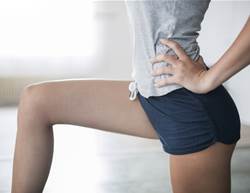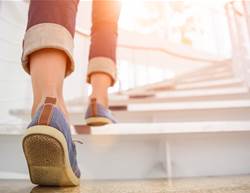Osteoporosis is on the rise in Australia, with more than 4.74 million people over 50 living with poor bone health.
The chronic disease makes your bones more likely to break from minor injuries or falls. Many people don’t know that they have osteoporosis until they are diagnosed with a broken or fractured bone.
According to the Garvan Institute of Medical Research, the risk of a hip fracture for women is equal to or higher than the risk of developing an invasive breast cancer. Even more concerning is the statistic that one three adults over 50 dies within 12 months of sustaining a hip fracture.
These sobering facts have lead researchers at the Garvan Institute to develop a new diagnostic tool for doctors and health professionals – a skeletal age calculator. It’s hoped the calculator will make it easier to identify people at risk of a first bone fracture and subsequent fractures.
“A fracture shortens life expectancy, even more so in men than in women,” said Professor Tuan Nguyen, Head of the Genetic Epidemiology of Osteoporosis Lab at Garvan, Professor of Predictive Medicine at the University of Technology Sydney and senior author of the research published in eLife.
“But there is a lot of complacency in the community when it comes to bone health – only 20% of those with fragility fractures are taking approved treatments for osteoporosis, which could significantly reduce their risk of further fractures.
“We hope that calculating a person’s skeletal age, which may be much higher than their actual age, will identify those who are at higher risk of fractures and encourage them to speak to their doctor about how to better manage their condition.”
Predicting fracture risk
From age 50, bone fractures affect one in two women and one in three men. With each fracture, the risk of future fracture increases two-fold and studies have shown that pre-existing fractures increase the risk of premature death by about 50% in both men and women.
“There are existing models to predict the risk of an initial fracture, such as the Garvan Fracture Risk Calculator that is already available to doctors,” said first author Dr Thao Ho-Le. “But it remains unclear why some individuals do well after an initial fracture, while others go on to sustain further fractures and have a higher risk of mortality
“We set out to develop a model to complement existing tools, which could simultaneously predict an individual’s risk of subsequent fractures and consequently, their chance of premature death.”
To develop their sophisticated computational model, the team led by Professor Nguyen used data from Garvan’s Dubbo Osteoporosis Epidemiology Study, which was started in 1989 and is the world’s longest-running large-scale study of osteoporosis in men and women.
Their model incorporates an individual’s age, bone density, history of previous fractures and other health conditions to calculate a personalised estimate of ‘skeletal age’.
“In our new model, we quantified the intricate transitions between fracture, re-fracture and mortality,” explained Professor Nguyen.
“We define skeletal age as the age of an individual's skeleton that results from their risk factors for fracture.
“Using this definition, we for instance estimated that a typical 70 year old man who had sustained a fracture had a skeletal age of 75 years. But when the man had a second fracture his skeletal age rose to 87 years. This means the individual now has the same fracture risk profile as an 87 year old man who has a healthy risk profile.”
Improving bone health
The team is now developing an online calculator, which doctors will be able to use to calculate their patients’ skeletal age.
The researchers hope it will be a valuable tool for initiating discussions between health professionals and their patients on how to improve bone health, which may involve medication, exercise, increasing dietary calcium and getting enough vitamin D.
“The key message of this study is that it’s never too early to think about your bone health,” said Professor Nguyen.
“Do not wait until a fracture has occurred to take preventive action. If your skeletal age is higher than your actual age, you should seek medical advice from your doctor on how to manage the higher risk.”
Osteoporosis Australia rebrands as Healthy Bones Australia
Osteoporosis Australia rebranded earlier this month and will now be known as Healthy Bones Australia (HBA).
A spokesperson from HBA said: “Our new name, Healthy Bones Australia, reflects our focus on prevention and goal to protect, build and support healthy bones in Australia. Our new resource hub, healthybonesaustralia.org.au, offers the community valuable educational tools which are easy to access."
“The new website provides important content for users — fact sheets on medical conditions or medications which can impact bone health; tips on calcium, vitamin D and exercise; access to the online risk factor self-assessment, called Know Your Bones; and personal stories shared by people living with osteoporosis.
“Poor bone health is serious, resulting in over 173,000 broken bones annually — it has a big impact on patients affected and their families and is very costly to the healthcare system. The focus should be on preventing broken bones.”










